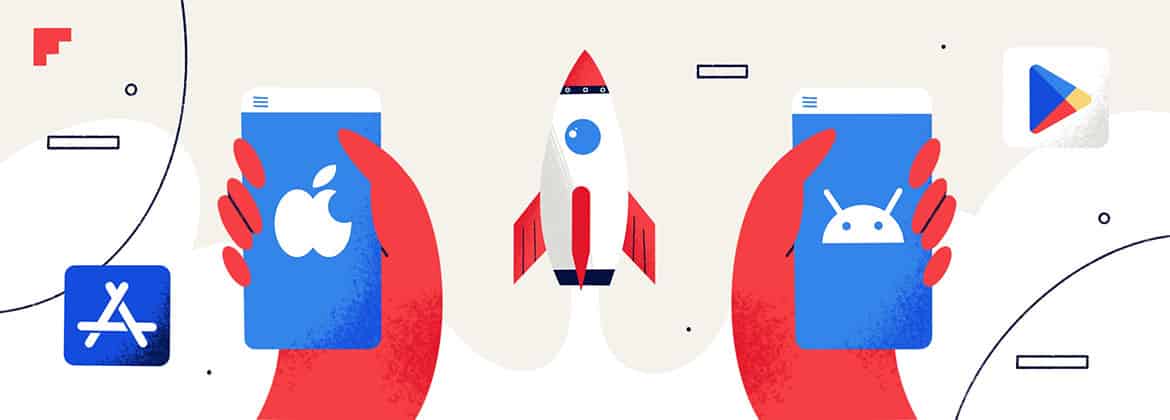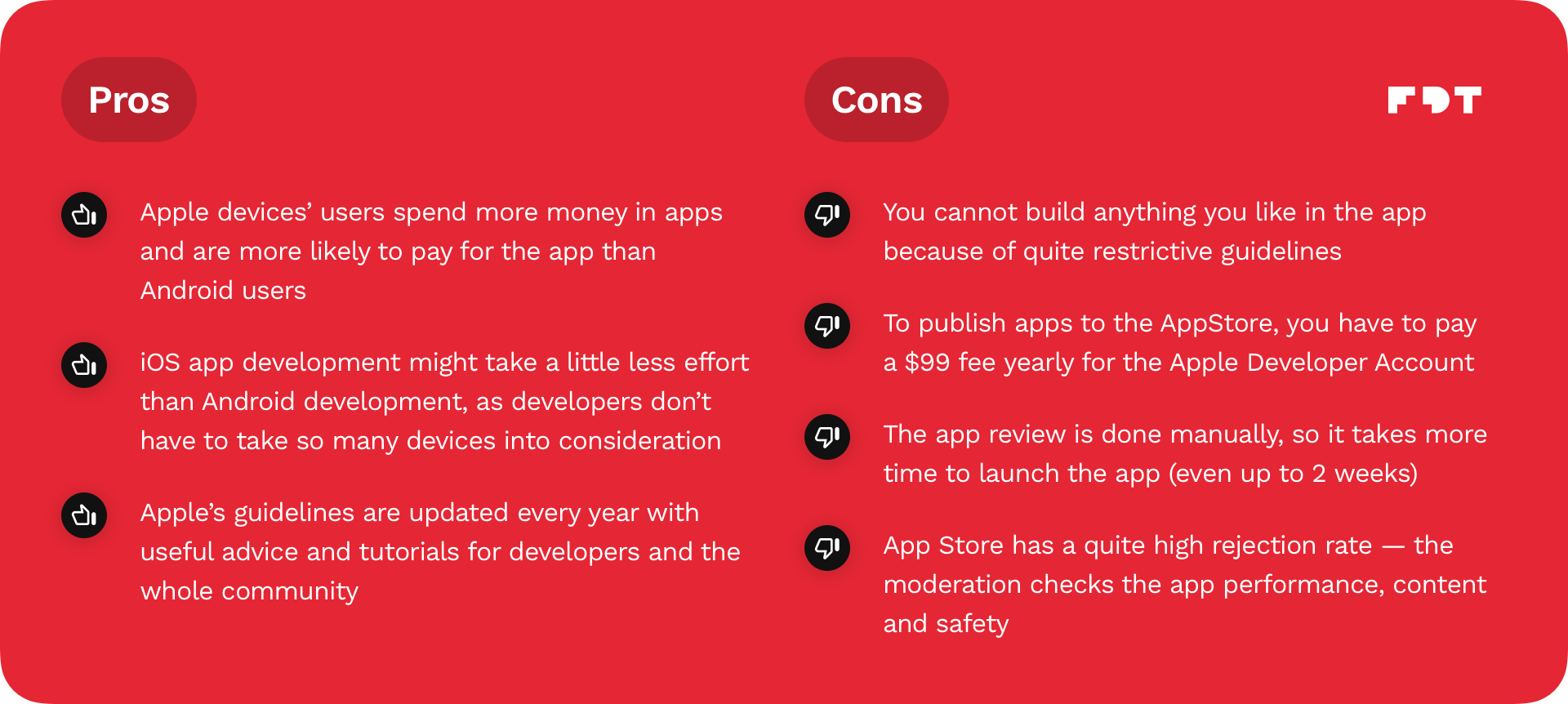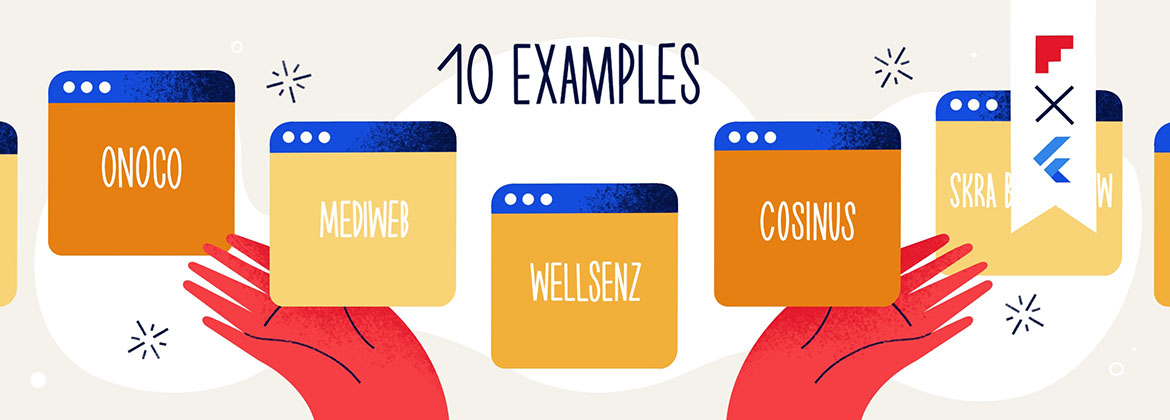
iOS vs Android: which should you choose for building your app?
Are you wondering if your app should be built for Android or iOS? Or maybe you should consider developing your product for both platforms?
In this article you’ll find out what the differences, pros and cons of Android and iOS development are. Hope this will help you make that hard decision.
Basically, once you’ve decided to create an app, you have the following options:
- build only an app for iOS,
- go only with Android,
- build an app for one of the platforms at first, then develop for the another,
- create both apps at once (there’s a separate app for Android and iOS).
Let’s consider each of them to make you aware of all the possibilities and obstacles ahead.
A little bit of a spoiler for the start: there is no winner in this fight. The choice between iOS and Android should depend on your business goals, target audience, preferences and the specification of your app. I will also be describing cross-platform development, enabling us to build apps for both platforms at once. Keep going.
Contents
Limitations in iOS and Android development
When it comes to decision making, there are three main factors that you need to take into account (at the same time these are the things that may stop you at some point):
Time
Here’s the thing. You might want to release the app as soon as possible. You might have little time and care about fast development. But the truth is: you don’t have much impact on the development time itself, it has to take as much time as needed depending on your requirements. However, you do have an impact on the requirements. That’s why I highly recommend you to read about a Minimum Viable Product – a thing that will help you launch the app really fast and start earning funds sooner.
But going back to our options from the above… If you don’t have much time but want to enable users of both platforms to enjoy your app, you can choose to create it for iOS and Android at once. It can be done by developing a cross-platform app and/or with the help of a team where both Android developers and iOS specialists will be available. Note that creating native apps for both platforms will be more expensive.
Budget
On the other hand, there might be a limited budget for the project. There are many ways to build an app with low budget but when it comes to choosing between platforms, you can always go with Android and add an iOS version later. Or the other way round. Android is now the world's most commonly used smartphone platform, so you can gain as many users as possible sooner and start earning money from it. On the other hand, iOS apps gain more revenue globally, so the obvious fact would be that you can earn more for further development by starting with iOS. The truth is, it depends on the monetization strategy, as iOS users are more willing to spend money on paid apps and in-app purchases, while Android users would bring you more profit e.g. from in-app ads. You’ll find more information on that later in this article.
Resources
Want to create an in-house team? That’s a good idea for complex, large projects that will take years and if you already have a company with people who can take care of the project on board. But if your business is rather a small one, you’ll soon find out that in order to build a team, you’ll need to find, hire and onboard lots of people. You’ll also have to take care of the equipment and the workplace.
If that turns out to be too much, you have another option: to hire the whole team from a software agency or to hire freelancers. We write about outsourcing the app development here and provide hints on how to find the right development team here.
When it comes to development options themselves, if you’re limited by your resources, it’s always better to choose one platform, at least for the start. One developer will be enough if you decide to do so. For both platforms, in native development, you’ll need at least two mobile developers.
How to choose?
Your choice between iOS and Android platform can depend on many factors. Let’s focus on facts to make it easier for you.
Monetization strategy matters
You can make a decision about the platform on the basis of your chosen monetization strategy, or the other way round, choose the strategy based on the platform you’re developing the app for. It doesn’t matter, but the important fact is that iOS users are more likely to spend money in the app or for an app than Android users. So if you aim for these kinds of users, or if you want to follow this kind of monetization model, choose iOS. According to Statista, in the third quarter of 2021, gross app revenue in the Google Play store amounted to 12.1 billion U.S. dollars worldwide, a 17.4% increase compared to the corresponding quarter of the previous year. The Apple App Store generated 21.5 billion U.S. dollars in consumer spending on in-app purchases, subscriptions, and premium apps in the most recently measured quarter.
When, on the other hand, you choose to implement in-app ads in the app and it will be your main monetization strategy, Android seems to be a better choice. This platform has statistically more users (more below), so you’ll gain more profit on ads.
Android is used by vast majority of people in the world
Android had more than 70% of market share in 2021, while iOS accounted for around 25% of the mobile operating system market. If you aim to have a large amount of users, you might choose Android development following these statistics, but it’s not only the number that matters here. All depends on the target group, as both platforms have their pros and cons when it comes to their users.
iOS rules in the USA
That’s exactly what was mentioned above. Numbers and statistics give you an overview, but it’s always good to do some research concerning your target group. Because, for example, if you’re planning to build an app for US users, you should probably aim for iOS first. In 2021, iOS reached approximately 60% market share there.
There are various dependencies concerning users’ localization, so remember to check which platform is more popular in your target country, especially if you plan to create a product for one platform only.
There are more Android apps available on the market
Taking advantage of the information from Statista, again, in the first quarter of 2021 there were 3.48 million Android apps available in Google Play Store. iOS users could choose between 2.22 million available apps. The Apple App Store is the second biggest mobile app store in the world, but we have to admit that there’s quite a difference between the winner and the second place here.
It’s worth mentioning that it means bigger competition on the Android platform, so it will be harder to stand out on the market with an Android app.
Finding your target market
If you still haven’t set your target group, users’ requirements and product goals, what you can definitely find helpful is creating a competitive analysis. It’s an in-depth research of competing apps that will help you find flaws in these products and lacks in features, and get to know their audience needs. That’s how you can find out what your users might also like etc. Here you’ll find a competitive analysis template.
Another helpful tool in getting to know your users is a user persona. Creating user personas is a simple exercise to make the process of defining the target group easier. There’s also a template for that and you can take a look at it here.
Building apps for iOS users
Starting with the basics of iOS app development, let’s agree on what the iOS platform is.
Simply put, Apple iOS is a proprietary mobile operating system (used in mobile technology). iOS is only used on Apple devices, such as iPhone and iPad.
iOS app development languages
The most popular iOS languages are:
- Swift – is a relatively new language, released in 2014, with many useful features. It’s now more supported than Objective-C,
- Objective-C – the original, object-oriented Apple’s language.
Advantages of iOS app development
- Apple devices’ users spend more money in apps and are more likely to pay for the app than Android users, so an iOS app can simply help you get more income (if you aim to implement in-app purchases or a paid app),
- iOS app development might take a little less effort than Android development, as developers don’t have to take so many devices into consideration. There are very few iOS mobile devices, compared to Android. It also concerns designers who take care of the screen parameters (however if your team contains experienced Android and iOS developers, there wouldn’t be much difference all-in-all),
- Apple’s guidelines are updated every year with useful advice and tutorials for developers and the whole community,
Disadvantages of iOS app development
- For iOS apps, there are quite restrictive guidelines so it’s not like you can build anything you like in the app,
- To publish apps to the AppStore, you have to pay a $99 fee yearly for the Apple Developer Account,
- The app review is done manually, so it takes more time to launch the app (even up to 2 weeks),
- App Store has a quite high rejection rate – the moderation checks the app performance, content and safety.

Building apps for Android devices
Again, starting with the basics: Android platform is also made for mobile devices (smartphones, tablets, wearables). It works on much more devices than the iOS platform. It includes five levels: Linux kernel, Libraries, Application framework, Android runtime, and System applications.
Android development languages
When it comes to Android apps, developers have quite a large choice:
- Kotlin – which replaced Java as the official language for Android app development,
- Java – still the most frequently used language for Android apps, and the most supported by Google.
Currently these programming languages are mainly used for Android app development.
Advantages of Android app development
- Developers can work on any system to use the Android Studio and build apps,
- Android dominates the global market – it’s the most popular platform and has the largest number of users,
- Android is used on many other devices apart from mobile phones, like TVs, watches and car audio systems (but it requires creating a separate app for each device),
- Specialist can take advantage of automatic code formatting, easy navigation and other convenient features when creating apps (e.g. development environment analyzes the code and can automatically generate some of its parts),
- The platform is very flexible – developers can create customized features and UX endlessly.
Disadvantages of Android app development
- Android users spend way less money on mobile apps than iOS users,
- Each company creating a software for a specific device aims to add innovative features. With such a great number of different devices, developers need to pay attention to whether the app behaves correctly on all of them. Android OS runs on all kinds of different devices from smartphones to wearables and foldable devices.
- Also because of this high number of Android devices out there, QA specialists and developers might have to put more effort on testing and development in case of iOS products (depending also on the development team’s abilities).

Cross-platform app development
There is a solution to help you avoid making the decision concerning Android or iOS app development. Cross-platform app development is what you can use to create Android and iOS apps at the same time. Developers write a single code base for both platforms. This enables you to save a lot of time and money for the app development. Most popular frameworks and SKDs used for this method of development are Flutter and React Native. Learn more about the pros and cons of cross-platform development in this article.
Remember! Choosing cross-platform development doesn’t mean skipping the market analysis, defining the target group etc. You still need to set the product goals, choose the monetization strategy and make decisions about other things that require these analyses.
Conclusion
Your choice naturally depends on your business goals, target audience, local trends etc. If you aim to build a native app as a startup, it’s probably the best to start with one platform. But it is advisable not to limit your market possibilities and ultimately have an app for both platforms. That’s why cross-platform development might be the best solution to fit your needs, especially if your budget is limited.












